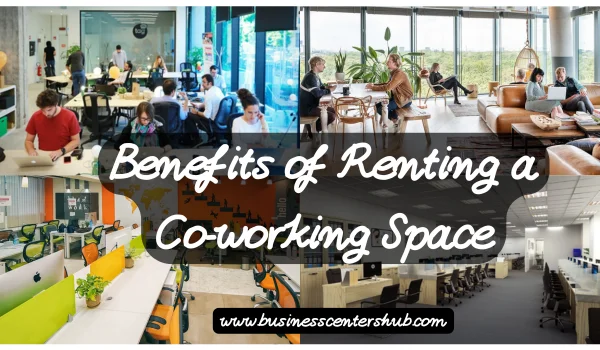The modern workforce is undergoing a massive transformation in the United States. With the rise of startups, freelancers, and remote teams, traditional office setups are no longer the only option for running a successful business. Instead, co-working spaces have emerged as a flexible, affordable, and community-driven alternative.
But why are so many professionals and companies choosing co-working over conventional office leases? Let’s explore the key benefits of renting a co-working space compared to traditional offices in the USA.

Cost Savings and Flexibility
One of the biggest advantages of co-working spaces is their affordability. Traditional offices often require long-term leases, heavy deposits, and additional expenses for furniture, utilities, and maintenance. This can be financially burdensome, especially for startups or small businesses.
Co-working spaces, on the other hand, operate on membership models—daily, weekly, monthly, or yearly. Companies pay only for what they need, whether it’s a single desk, a private cabin, or a meeting room. There are no hidden costs for electricity, cleaning, or internet services, making budgeting easier and more predictable.
This flexibility allows businesses to scale up or down quickly based on their needs, something traditional offices rarely provide.
Access to Premium Amenities
In a traditional office, businesses must invest heavily in infrastructure—high-speed internet, conference rooms, printers, cafeterias, and more. Co-working spaces eliminate this burden by offering a wide range of ready-to-use amenities, such as:
- High-speed Wi-Fi and IT support
- Fully equipped meeting rooms
- Printing and scanning facilities
- Cafés and kitchens
- Lounges and breakout areas
- Onsite gyms and wellness centers (in many locations)
For a fraction of the cost, professionals get access to facilities that would otherwise require huge investments in a private office.
Networking and Collaboration Opportunities
Traditional offices isolate businesses within their own four walls. Co-working spaces, however, thrive on community and collaboration. They bring together diverse professionals—entrepreneurs, freelancers, designers, consultants, and tech experts—under one roof.
This environment creates endless opportunities for:
- Networking and partnerships
- Finding new clients or service providers
- Learning from other professionals
- Attending events, workshops, and meetups organized by the co-working community
For startups and small businesses, this collaborative atmosphere can be a game-changer, often leading to growth opportunities that wouldn’t be possible in a traditional office setting.
Flexibility for Remote and Hybrid Work
The COVID-19 pandemic permanently changed the way people work in the USA. Remote and hybrid models have become mainstream. While working from home has its perks, it also comes with distractions and a lack of professional networking.
Co-working spaces serve as the perfect balance—offering the structure of an office without the rigidity of long-term leases. Remote workers can rent a desk near their home, while companies can provide satellite workspaces for employees spread across different cities.
Traditional offices cannot provide this level of flexibility, making co-working spaces the preferred choice for businesses adapting to new work models.
Prestigious Business Locations
Location plays a big role in business credibility. Traditional offices in prime areas like New York City, San Francisco, or Chicago can be prohibitively expensive. Co-working spaces solve this problem by offering affordable access to prestigious business addresses.
For startups, freelancers, and small businesses, having an office in a recognized commercial district helps in building trust with clients and investors—without the high rental costs of traditional offices.
Work-Life Balance and Employee Wellness
Modern co-working spaces are designed to support not just productivity but also employee well-being. Many centers feature wellness programs, yoga rooms, relaxation zones, and recreational activities. They encourage a healthier work-life balance compared to traditional office setups, which often prioritize efficiency over well-being.
This focus on community and wellness helps employees stay motivated and reduces burnout—an important factor in today’s fast-paced work culture.
Shorter Commitment, Lower Risk
Traditional offices require leases that can last three to five years, locking businesses into long-term commitments even when growth is uncertain. Co-working spaces, by contrast, allow businesses to test new markets, set up temporary offices, or relocate quickly without penalties.
This low-risk approach makes co-working especially attractive to entrepreneurs, early-stage startups, and even multinational companies experimenting with flexible work models.
Technology-Enabled Workspaces
Modern co-working centers in the USA are equipped with cutting-edge technology—from digital access systems and smart conference booking to cloud-based collaboration tools. Traditional offices often lag behind in implementing such solutions due to cost and scalability issues.
For tech-driven businesses, co-working spaces provide the ideal ecosystem to operate efficiently and stay ahead of the curve.
Conclusion
The benefits of renting a co-working space over traditional offices in the USA are clear: affordability, flexibility, networking, premium amenities, and employee well-being. In a rapidly changing work culture, these advantages are driving professionals, startups, and even large enterprises to embrace co-working spaces.
While traditional offices still hold value for some corporations, the future of work in America is undoubtedly leaning toward flexible, collaborative, and tech-enabled co-working environments. For businesses looking to stay agile, competitive, and cost-effective, co-working is not just an option—it’s a smart strategy for success.


